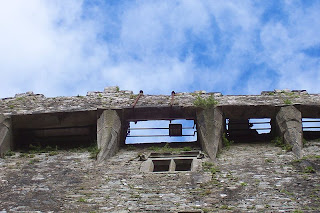As you can guess from previous posts, I love the extreme. And part of that fixation is rooted in my obsession with the world’s largest. So today, I introduce the world’s longest and fastest zip-lines in hopes that one day you’ll have the courage to face up to not-realistically-threatening feats yourself. But first, as always, a little background.
Most people assume that zip-lines are a recent trend; concocted by some drunken college student. But they’re not. This combination of ropes and pulleys is deeply connected to the Tyrolean traverse; system climbers employ to move between pillars, cliffs, and waterways. Originating out of the Dolomites, Kaisergebrige, and Tyrolean Alps, the traverse was developed by the Bavarian and Tyrolean climbers in the late 19th century. Since then, this method of transportation has been utilized by the inhabitants of the Himalayas, sending food and supplies over large rivers, and by the majority of navies in moving fuel to ships at sea allowing increased range.
In the 1970s, the technique was used by researchers in botany, zoology, and ecology to study forest canopies. The same techniques used by climbers were now being utilized for scaling trees. This soon resulted in the production of modern canopy tours when students realized that by angling their lines slightly, the ride down after a day in the trees was a lot more fun!
Zip-lines are known by many names throughout the globe, such as the “flying fox” (Australia, New Zealand), “aerial runway” (United Kingdom), “rip/death slide”, and more recently “footy slides” (Africa).
Longest in the World
Located in Hoonah, Alaska, is the longest zip-line in the world, the
ZipRider. The line measures 5,330 feet long with a total vertical drop of 1,300 feet. With six cables in width, participants are harnessed in and released for the race to the bottom. Passing through thick woods you’ll later see Port Frederick and Icy Straight, Alaska on your 1.5 minute long descent.
But if that doesn’t interest you enough, you’ll still reach speeds of 60 mph! Riders must weigh between 90-275 pounds and not be pregnant or have back and/or neck problems. To find out how you can visit this isolated gem, visit
icystraitpoint.com for more information.
The fastest zip-line in the world is located in Sun City, South Africa and is the
ProNutro Zip Slide 2000; coming in at 920 feet high and 6,560 feet long!
Q: “Wait a minute! I thought you said that the
ZipRider was the longest in the world?”
A: Technically it is because the Zip Slide 2000 isn’t a
standard zip-line. One or two riders are supported on their stomachs inside a harness that they attach a crude rudder to at the end. (That’s right! You’re going so fast you need aerodynamic stabilization!)
You will reach speeds of 120 mph with an average speed of 57 mph! More information can be found at the company’s website,
zip2000.co.za.
Also, for those out there who may be thinking, “Well, I could make one of those.” There are resources available to assist you.
Ziplinegear.com is an excellently constructed website with any supply you could ever need. I also encourage you to read their blog for the latest “zip-line world” updates.
And if you’re looking for professional installation instruction,
this site is perfect.
I want to know…What do you think of the idea of a
haunted zip-line? We’re approaching Halloween and haunted houses are beginning to open their doors. I think it’d be a great idea because there is nowhere for you to escape (literally). Leave a comment and share your thoughts.




























